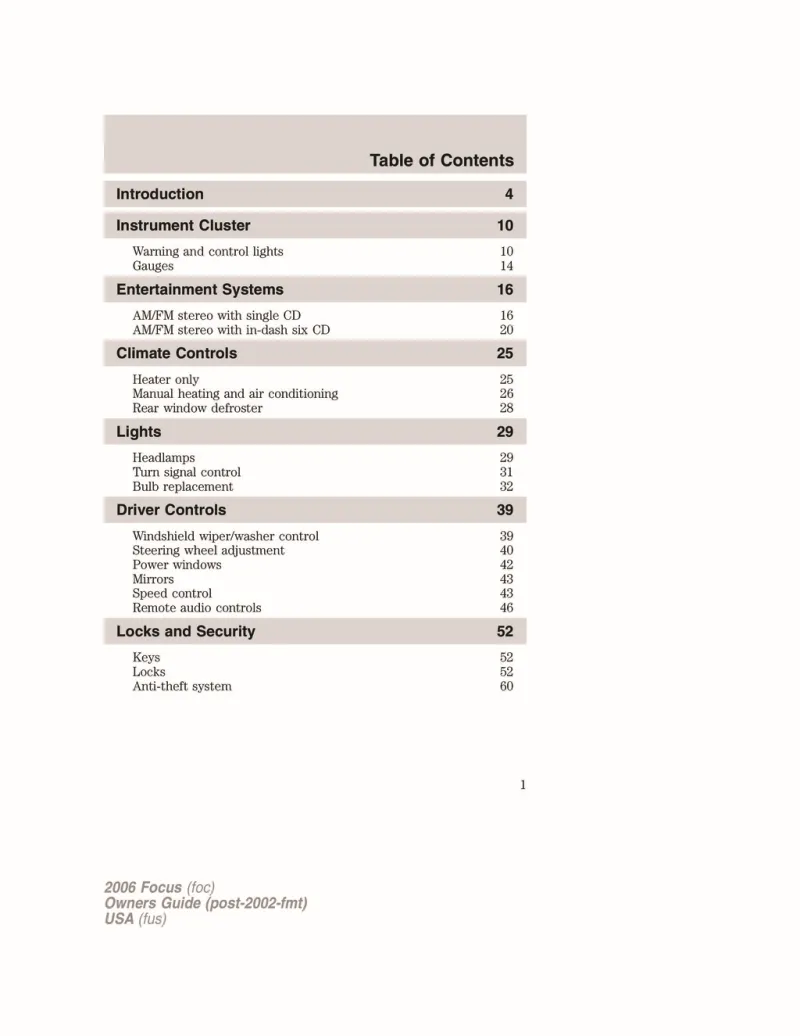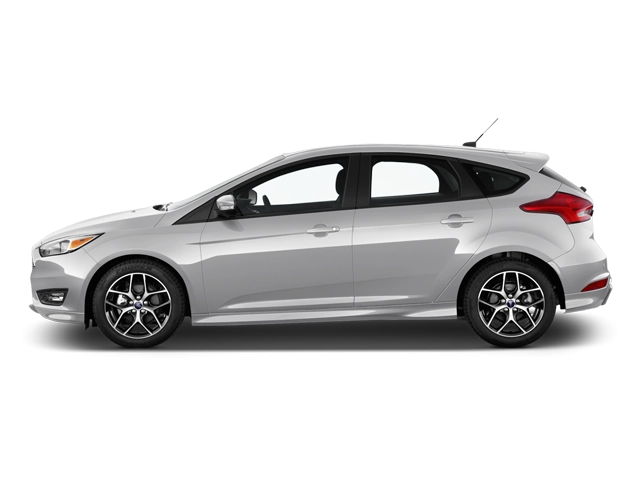2006 Ford Focus Owner's Manual

Table of Contents
2006 Ford Focus Overview
Introduction
The 2006 Ford Focus remains a notable entry in the compact car segment, renowned for its blend of sporty handling, comfort, and practicality. With a stylish design and an impressive array of features, this model appeals to a broad audience, from budget-conscious buyers to those seeking spirited driving experiences. The versatile hatchback, sedan, and wagon variants provide something for everyone, making it a well-rounded choice for daily commutes and weekend adventures alike.
Powertrains
The 2006 Focus offers a variety of powertrains, catering to different driving preferences. A standard 2.0-liter four-cylinder engine produces 136 horsepower, delivering a balance of efficient power and fuel economy. For those seeking enhanced performance, an optional 2.3-liter four-cylinder engine is available, offering 151 horsepower with a sportier character. Transmission options include a five-speed manual or a four-speed automatic, allowing drivers to choose their preferred driving experience. With commendable fuel efficiency, the Focus keeps pace in an increasingly eco-conscious automotive market.
Trims
The 2006 Ford Focus comes in several trim levels: the base S, mid-range SE, sporty ZX4 ST, and the well-equipped SES. Each trim builds on the previous one, offering more features such as upgraded audio systems, air conditioning, and alloy wheels. The ZX4 ST trim emphasizes sportiness, boasting unique styling cues and enhanced suspension elements. Regardless of the choice, buyers will find every trim uniquely designed to cater to varied tastes and needs.
Features
This model is equipped with a range of features to ensure comfort and convenience. Standard equipment includes power windows and locks, keyless entry, and a sound system with a CD player. Higher trims enhance the experience with leather-wrapped steering wheels, premium audio options, and advanced safety features such as side airbags and anti-lock brakes, ensuring peace of mind while driving.
Owner's Manual
The owner’s manual for the 2006 Ford Focus serves as an invaluable resource, offering comprehensive information on vehicle operation, maintenance schedules, and troubleshooting. With detailed instructions and diagrams, it empowers owners to maximize their driving experience while ensuring the longevity of their vehicle. Access to essential information regarding warranties and service recommendations makes it an indispensable guide for every Focus owner.
User manual download
The Ford Focus owner manual for the 2006 model year is to be found in PDF downloadable format on this page. The owner manual for the model year 2006 is free and in English, but the repair manuals are usually not easy to get and may cost more.
Manual Questions
Fill the form below and someone will help you!

